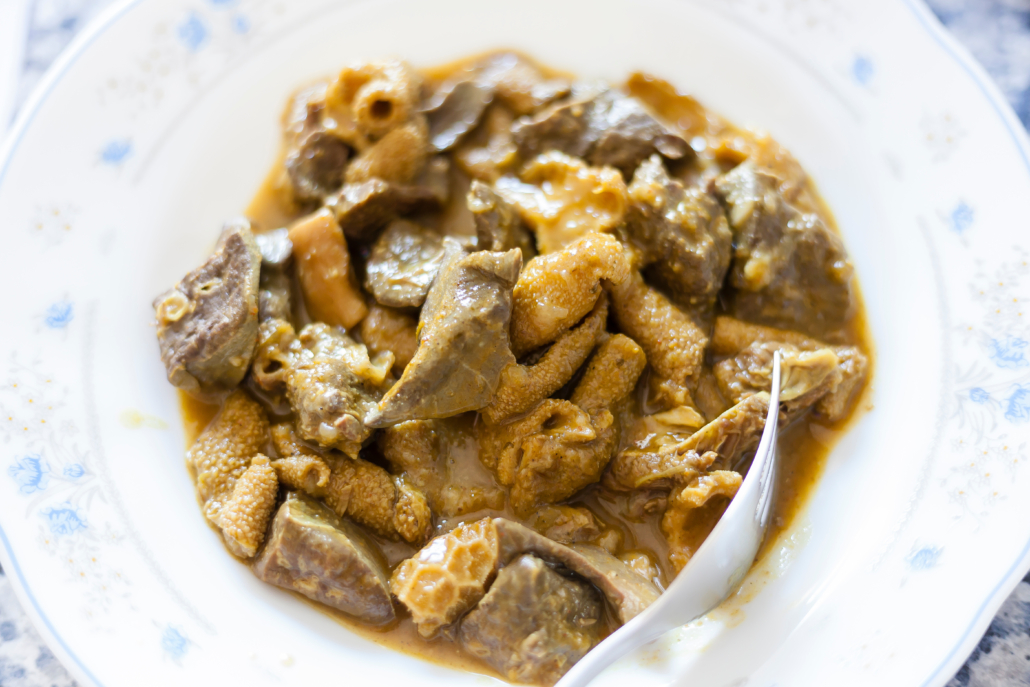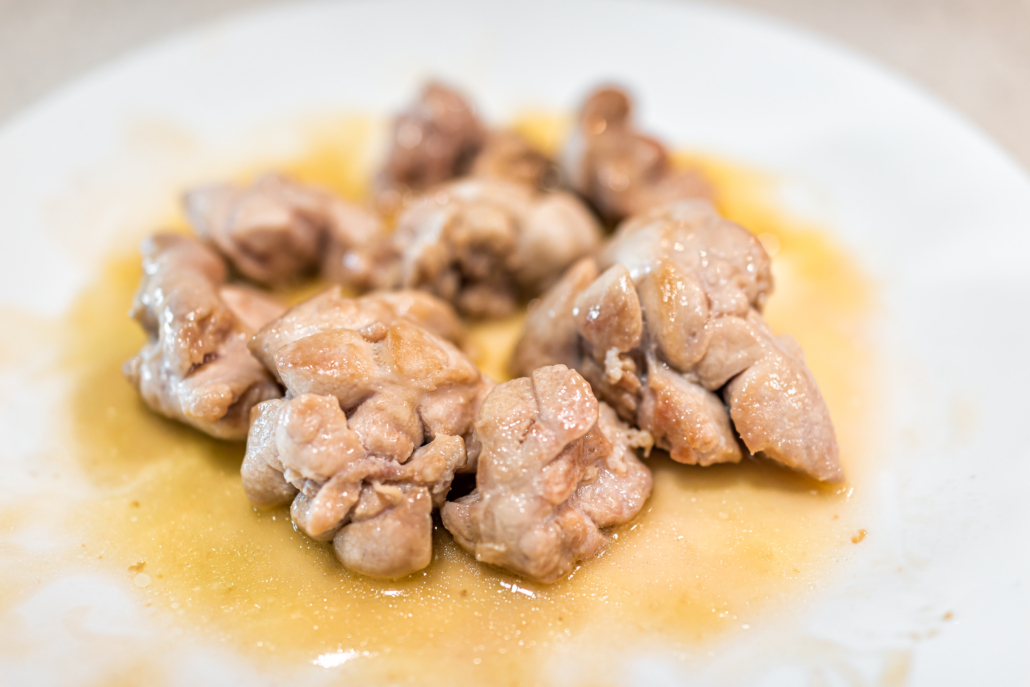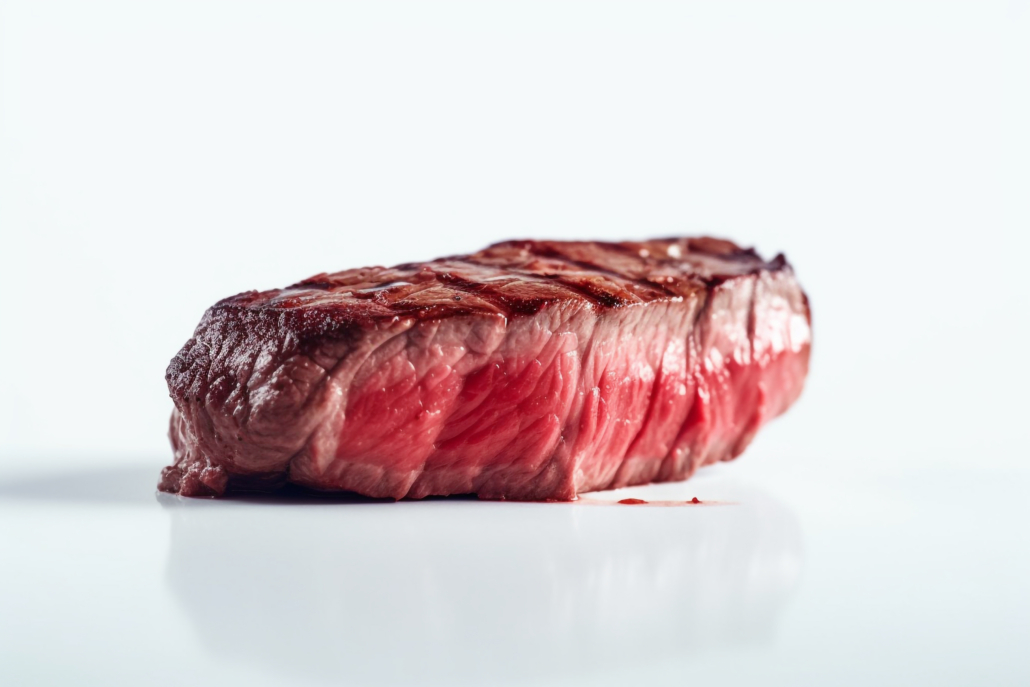We include products in articles we think are useful for our readers. If you buy products or services through links on our website, we may earn a small commission.
Lamb vs Beef: Battle of Two Super-Meats
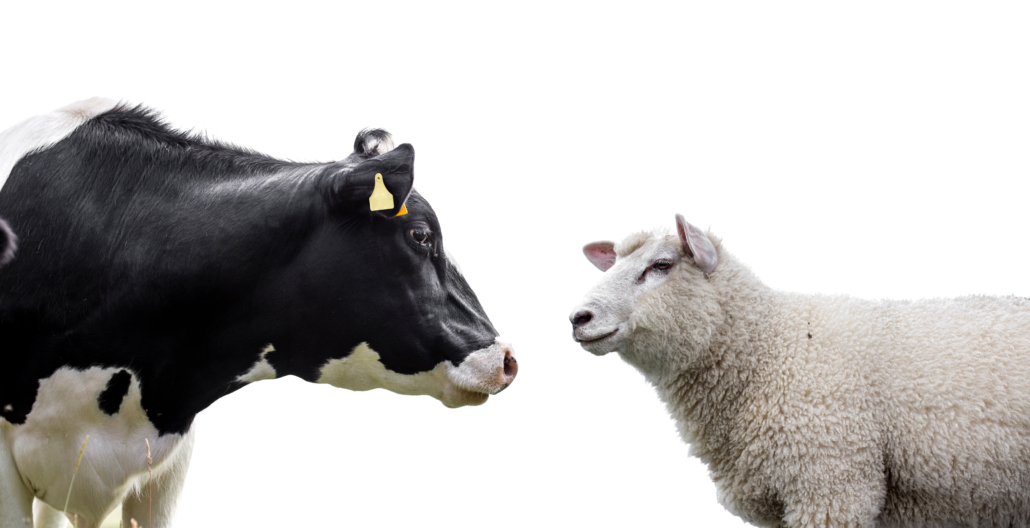
Lamb vs. beef? Both of these red meats are bonafide superfoods loaded with healthy fats, complete proteins, and a robust matrix of essential vitamins and minerals.
In fact, lamb and beef are so nutritionally-replete that they’re the centerpiece of a movement of “Lion Dieters” thriving on only red meat, salt, and water. You may have heard of this approach from popular meat-based enthusiasts like psychologist Jordan Peterson and podcast host Joe Rogan.
But even when considering that both lamb and beef are healthy whole foods, is one healthier than the other?
In this article, we’ll explore the question of lamb vs. beef using a head-to-head nutritional comparison.
Table of Contents
Lamb vs. Beef for Health
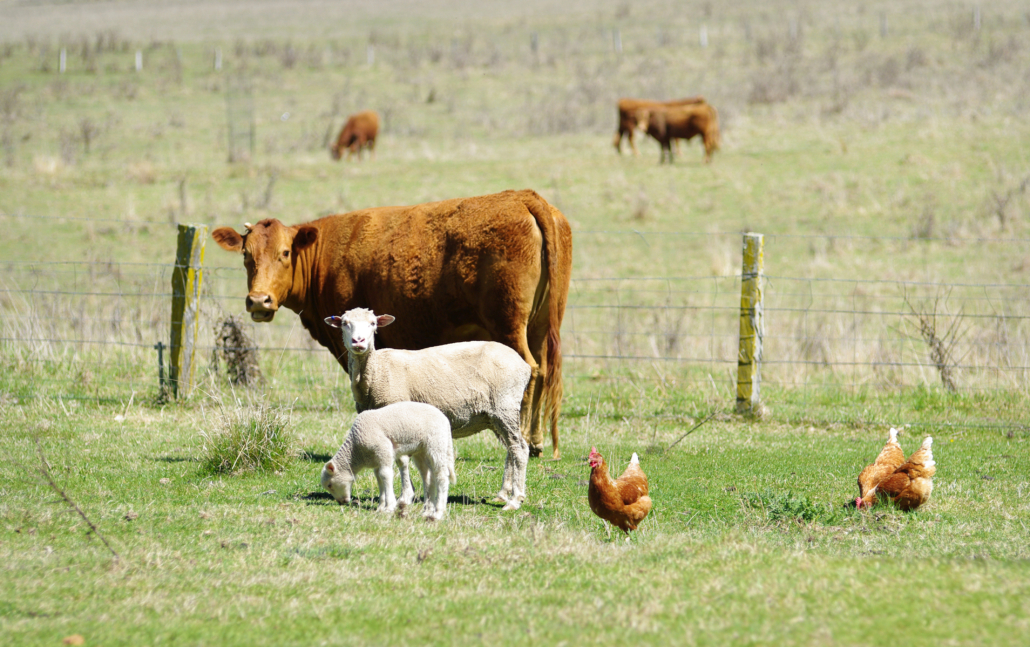
Lamb and beef are both red meat from ruminant animals.
Ruminant animals graze on grass and rely on a rumen stomach that ferments cellulose from plants into fatty acids as a primary energy source.
Ruminant animals are better than nonruminant animals like pigs, fish, and fowl at transforming foods into an optimal fatty acid profile for humans.
The ruminant digestive process also does a good job of eliminating naturally occurring plant toxins and antinutrients from the plant they eat.
Since humans don’t have a rumen, when we eat plant foods, their natural plant defense mechanisms can inhibit nutrient absorption, degrade our intestinal barrier, and cause inflammation.
The Human Body is Designed to Eat Lamb and Beef
Though the plant-based movement is loudly promoted by health institutions, modern research is telling a different story. One in which meat is an unfairly maligned and ultimately extremely healthy food.
In fact, numerous lines of evidence suggest that the human body evolved on a mostly carnivorous diet of fatty meat for nearly 2 million years until the dawn of agriculture only 10,000 years ago.
Our ability to harvest and eat the meat of large fatty animals is what gave us the abundance of brain-boosting nutrients that eventually separated us from our herbivorous primate ancestors.
Our modern bodies are nearly identical to our hunter-gatherer ancestors and preserve these same physiological traits for thriving on meat.
A 2023 study published in Animal Frontiers, concluded that “Aspects of human anatomy, digestion, and metabolism diverged from other primates, indicating evolutionary reliance on, and compatibility with, substantial meat intake. Implications of a disconnect from evolutionary dietary patterns may contribute to today’s burden of disease, increasing the risk for both nutrient deficiencies and chronic diseases.”
Centering your diet around red ruminant meats like lamb and beef while cutting processed industrial foods like grains, sugars, and vegetable oils can be viewed as a way to reclaim your metabolic healthy by aligning your food choices with ancestral eating patterns.
If you’re still influenced by the anti-meat dogma that has plagued the dietary guidelines since the 1950s, here’s a rundown of what mainstream modern nutritional science has to say.
- For the vast majority of people, fresh meat is remarkably healthy. Lamb and beef are loaded with bioavailable and meat-specific nutrients, highly satiating, and associated with various markers of health, fertility, and longevity.
- Eating more meat is correlated with longer life expectancy. This is true even when considering total caloric intake, socioeconomic status, the advantages of modern health care and urban living, and obesity [3]
- Saturated fat–the part of lamb and beef that is most demonized– is part of a complex and healthy matrix of nutrients and is healthy for most people . A study published in the Journal of the American College of Cardiology found, “Although intake of processed meat has been associated with increased risk of CHD, intake of unprocessed red meat is not, which indicates that the saturated fat content of meat is unlikely to be responsible for this association”
- Studies that compare high-meat, low-carb diets to non-meat diets routinely reveal that high-meat diets result in better cardiovascular health, weight loss, and blood sugar regulation
Lamb vs. Beef: Nutrition
| NUTRIENT | 227g (8 OZ) Ribeye Steak | %RDV | 227g (8 OZ) Lamb Rib Chops | %RDV | |
| Calories | 560 cal | 813 cal | |||
| Fat | 34g | 66.6g | |||
| Saturated Fat | 12g | 28.6g | |||
| Monounsaturated Fat | 12g | 27.3g | |||
| Conjugated Linoleic Acid | 860mcg | 264-1254mg | |||
| Omega 3s | 64mg | 5% | 1171mg | 85% | |
| Omega 6s | 925mg | 5% | 3918mg | 23% | |
| Carbs | 0 | ||||
| Protein | 65g | 49.8g | |||
| VITAMINS | |||||
| B1 (Thiamin) | .85mg | 25% | 0.2mg | 17% | |
| B2 (Riboflavin) | 1mg | 78% | 0.5 | 38% | |
| B3 (Niacin) | 19.04mg | 119% | 15.8mg | 98% | |
| B5 (Pantothenic Acid) | 1.7mg | 30% | 1.8mg | 32% | |
| B6 | 1.1mg | 64% | .6mg | 46% | |
| B9 (Folate) | 28mcg | 7% | 31.8mcg | 8% | |
| B12 | 7.7mcg | 323% | 5.7mcg | 238% | |
| Vitamin D | 70% | ||||
| Vitamin E | .7mg | 7% | .3mg | 2% | |
| Choline | 350mg | 70% | 170mg | 34% | |
| Vitamin K2 | – | – | 12.19 | 10% | |
| MINERALS | |||||
| Magnesium | 61.3mg | 15% | 52.2 | 12% | |
| Potassium | 869.4mg | 18% | 608.4mg | 13% | |
| Iron | 8.1mg | 45% | 4.2mg | 24% | |
| Copper | 0.3 mg | 30% | 0.3mg | 30% | |
| Phosphorus | 549.3mg | 44% | 401.8mg | 32% | |
| Selenium | 82.2mcg | 149% | 53.8mcg | 98% | |
| Zinc | 25.1mg | 228% | 9mg | 82% |
Source: MyFoodData.com and USDA
Lamb vs. Beef Health Benefits
When determining the health benefits of lamb vs. beef, the best place to start is by comparing their beneficial nutrients. This entails fats, proteins, vitamins, minerals, and antioxidants. Let’s dig in.
Lamb vs. Beef: Fatty Acid Profiled
Both lamb and ribeye steak have excellent fatty acid profiles, but lamb has the edge thanks to a hyper-abundance of a highly beneficial fatty acid called Conjugated Linoleic Acid (CLA).
Conjugated Linoleic Acid
CLA is formed in when plants are fermented during the ruminant process. The outcome is a fatty acid that has been clinically shown to :
- Reduce excess body fat and increase lean muscle mass
- Reduced the risk of heart disease
- Boost immune function
- Prevents and reverse symptoms of type-2 diabetes
- Supports bone formation and mineral density
CLA is a fatty acid that the human body can’t make on its own, so we need to get it from animal food sources.
Lamb provides more CLA than any other food, boasting 4 – 19.0 mg CLA per gram of fat.
Monounsaturated Fat
Around ⅓ of the fat in both lamb and beef is monounsaturated fat.
Studies show that monounsaturated fat provides anti-inflammatory properties, reduces bad cholesterol, and increases good cholesterol, which may reduce the risk of heart disease
Stearic Acid
Stearic acid is a beneficial saturated fatty acid that has been shown to
- improve body fat ratio
- support mitochondrial function–the energy factories inside your cells
- promote weight loss
- Lower or have a neutral effect on LDL (bad) cholesterol
In beef, stearic acid makes up 31.4% of the saturated fat. In lamb it accounts for 35.3% of the total saturated fat. This gives lamb a very slight edge.
Omega 3 Fatty Acids
For a land animal, lamb provides a remarkable dose of omega-3 fatty acids, with 85% RDV per 8 oz. serving.
Ribeye steak eeks out only 5% RDV.
Omega 3 fatty acids provide numerous benefits for your body and brain, including.
- Protection against depression and anxiety
- Supports eye health
- Blood sugar regulation
- Reduced inflammation
Lamb vs. Beef: Vitamins
The vitamin content of lamb vs. beef is neck and neck, with both providing significant B and important minerals. But let’s look at a few areas where they vary.
Vitamin B12
Both lamb and beef provide an abundance of B12, but beef tops lamb with 323% vs. 238% RDV.
B12 is one of the most important vitamins and plays a key role in vital functions, including
- Formation of red blood cells,
- Converting food into energy
- Synthesizing DNA
- Brain function
- Deficiency in B12 can lead to dementia and Alzheimer’s disease
- Overall well-being and vitality
The importance of b12 to neurological function is reflected in the numerous studies showing that people who eat more meat experience significantly lower incidences of depression and psychiatric disorders than vegetarians and vegans.
Choline
Here’s another nutrient where beef comes out on top with 70% vs. 34% in lamb.
Not exactly a vitamin nor a mineral, choline straddles both worlds, but is often grouped with B vitamins based on the critical roles it plays in the body, including
- neurotransmitter synthesis
- cell-membrane signaling
- Transporting fat
- Critical for infant brain development–specifically of memory systems
- Lowers the risk of neural tube defects in infants
Not getting enough choline can increase the risk of pregnancy complications, including preeclampsia, premature birth, and low birth weight.
Lamb vs. Beef: Minerals and Amino Acids
Both lamb and beef provide an abundance of minerals and meat-specific amino acids with powerful health benefits. Let’s compare.
Carnitine
Lamb has the highest concentration of carnitine of all foods, with 434mg per 8oz.
While beef provides 112-324mg per 8oz.
- significantly improve male fertility
- Reduce anemia
- Boost mitochondrial function and improve insulin sensitivity for people with type 2 diabetes
- Support heart health
Carnosine
Beef provides 365mg/100g, and lamb provides 400mg/100g, giving us another instance where lamb packs slightly more nutritional punch than beef.
Carnosine provides anti-aging properties, protects the heart, prevents glycation, and acts as an antioxidant that protects telomeres.
Creatine
Lamb contains only half the creatine as beef, yet both are excellent dietary sources.
Creatine Improves cognitive function. Enhances athletic performance. Alzheimer’s patients show low creatine levels. Supports cardiovascular health and glycemic control.
Taurine
Beef provides 46.3mg of taurine per 100-gram serving, while lamb provides 43.8mg per 100 grams. So, for this important amino acid, it’s a toss-up.
Taurine acts as a powerful antioxidant that reduces glycation, inflammation, and oxidative stress, while offering dramatic anti-depressive effects in animal studies.
Zinc
With 228% of your RDV in zinc per 8 oz serving, beef is superior to lamb’s still substantial 82% for the same serving size.
Zinc is an essential nutrient that supports heart health, immune function, wound healing, sperm formation, sexual function, and insulin formation, among other vital functions.
The zinc found in both lamb and beef is 400% more useable than the kind of zinc that is found in cereals and 0ther plant foods.
Heme Iron
A type of iron found only in red meats, including lamb and beef, heme iron supports immune function, cognition, and energy metabolism.
With 45% per 8 oz serving compared to 24% from lamb, beef is the better source.
Selenium
Selenium is another mineral that beef offers more of than lamb with 149% vs 98%.
Selenium reduces oxidative stress and finallation, boosts immune function, protects against various cancers, and supports thyroid health.
Grass-Fed Lamb vs. Beef
Historically all lamb is grass-fed, but now about 15% is grain-fed. At the same time, only 4% of American beef is grass-fed.
So it’s likely that you’ll get grass-fed lamb by default and have to pay a premium for grass-fed beef. Is it worth it?
Grass-fed beef offers 500% more omega-3s than grain-fed beef, 200% more CLA, and is much higher in vitamin E and various other antioxidants.
So yes, it is worth it, and the grass-fed aspect can make up for some of the key nutrient gaps between beef and lamb.
Lamb vs. Beef: Taste
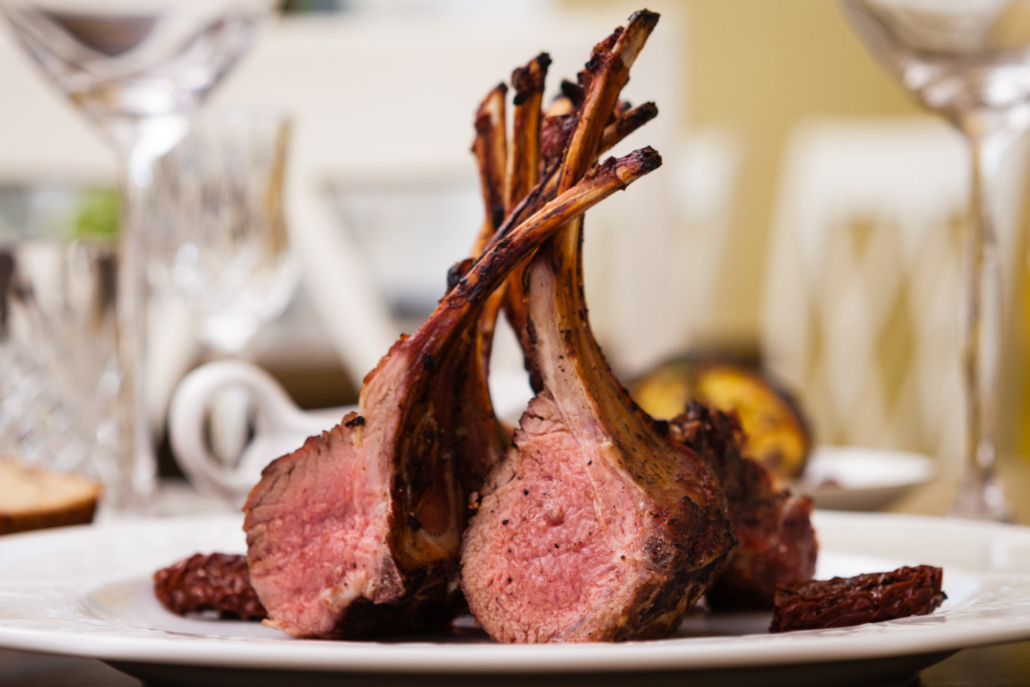
Both lamb and beef are delicious, succulent, and satiating. Lamb has a slightly stronger flavor, making it a favorite for stews and curries. In contrast, the milder flavor of beef makes it more versatile.
So when considering taste, it’s lamb vs beef is a toss-up, or at least it’s simply up to you.

Lamb vs. Beef: The Bottom Line
Lamb vs. Beef? This one is too close to call based on the nutritional information.
Both lamb and beef are remarkably healthy whole foods with an excellent matrix of healthy fats, complete proteins, beneficial amino acids, essential vitamins, and vital nutrients.
It is fair to say that these are two of the most nutritionally complete foods on earth.
If we were pressed to differentiate them, we’d point to the fact that lamb has more CLA and Omega 3s than beef–this makes it marginally healthier.
But beef has more vitamin B12, zinc, and selenium. So, it really depends on what your nutritional goals are.
The bottom line is that both are excellent, foundational foods, and there’s no reason to choose one over the other. Enjoy both with abandon!












